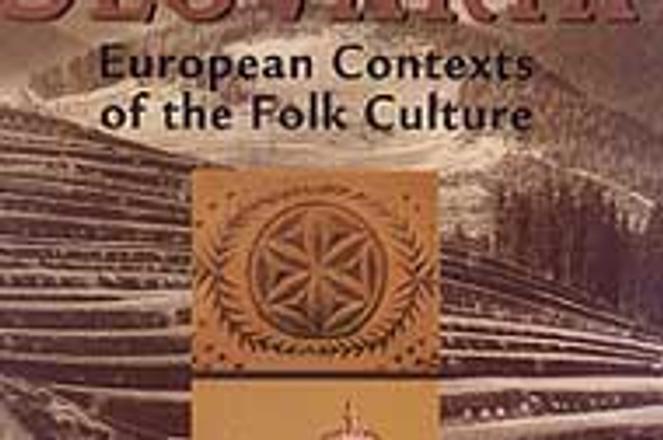Great detail is given in explaining Slovak folk culture
Slovakia - European Contexts of the Folk Culture.
Published by: Veda - Publishing House of the Slovak Academy of Sciences.
Price: 725 Sk.
Available at: Reduta book shop, Palackého 2.
Tel: 5443 0203.
As stated in the foreword of Slovakia - European Contexts of the Folk Culture, few nations have folk-art as rich and varied as Slovakia. This complex national treasure, ranging from ceramics and architecture to contemporary dance and music - most of which is still largely unexplored by western tourists - is beautifully presented in great detail in this book presented by the Publishing House of the Slovak Academy of Sciences (SAV).
A number of academics and experts from the SAV contributed to the book through writings and thorough research. The end result is a comprehensive introduction to the country and its culture which succeeds in its aim to define Slovak folk-art in the wider European context.
A historical odyssey illustrated with several beautiful photographs, illustrations and maps, the book presents the different regions of Slovakia. A list of important and interesting facts at the end of most chapters makes the book quite useful as well.
The book is divided into 15 chapters, the first of which begins by describing the traditional agrarian Slovak culture: techniques employed by Slovak peasants to work the land, animal breeding, sheep-herding and wine-making.
Continuing with a chapter on the history of hand-made craft, the authors describe the ceramic and pottery tradition in Slovak history dating back from when Slovaks first inhabited the era and continuing on to the rule of the Habsburg empire and modern times. Another interesting chapter details Slovak food eating and preparation. In great detail the author depicts food production of typical national cheeses such as 'parenica' (steamed cheese) and 'bryndza' (sheep cheese). The chapter also lists important feasts and the various foods eaten on those occasions.
The unique creativity and diversity of Slovak folk-design is displayed with eye-catching and colourful illustrations and photographs in the chapter on traditional clothes and foot-wear. Specific regional varieties of the folk-costume is presented while the authors explain the relationship between Slovak clothing and similar garb from neighbouring countries and regions like Moravia, Poland, Ukraine and Hungary.
Slovakia - European Contexts of the Folk Culture serves as an excellent resource for anyone interested in the country and its history. The chapters on settlement and dwellings have stunning photographs of traditional wooden architecture such as the drevenica and wooden churches that can still be found mainly in the mountainous Carpathian region.
The authors' expertise on the topic is encompassing and impressive. The only negative is that this knowledge reads poorly at times due to the weak translation into English. Sentence structures and word-order are awkward at times - the final version of the book would have benefited from having a native English speaker as editor.


